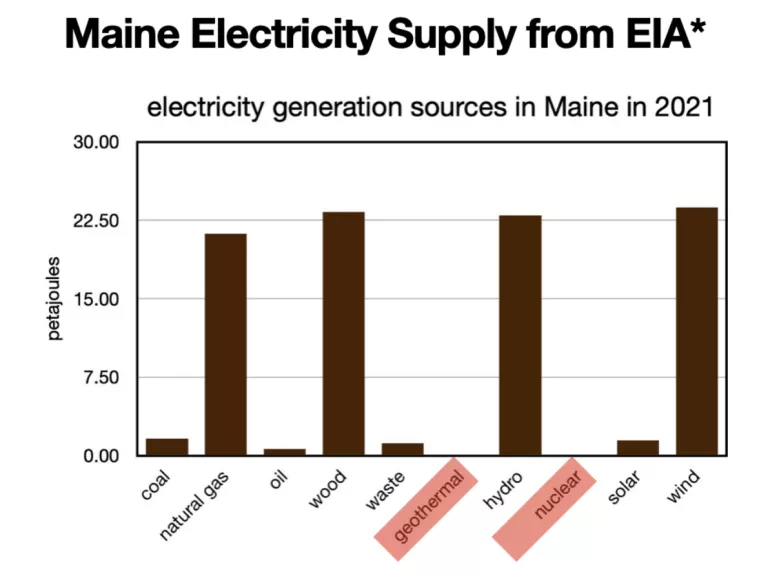By David von Seggern, Co-lead, Clean Energy Team, Sierra Club Maine
The effort to make an energy transition that will forestall climate change has largely fallen to state and local governments insofar as legislation to reach certain goals while the role of the federal government has been to supply needed research, guidance, monitoring, and funding. With no uniform federal standards for the whole nation, states have developed a wide range of goals through legislation; and local counties or municipalities have often established more ambitious goals through local statutes.
In previous years, one could compare states on the basis of what is known as Renewable Portfolio Standards (RPS) which set specific goals for how much of electricity production should be met by renewable sources. But more recently some states have legislated Clean Energy Standards (CES) which cover the entire spectrum of energy consumption. Maine has in fact both an RPS and a CES. These two approaches will work together as we electrify everything over the next few decades.
Where does Maine stand among the states? Maine’s recent CES (2021) is spelled out in statute Title 38: §576-A Greenhouse gas emissions reductions. It calls for “carbon neutrality” in 2045 and for 80% reduction by 2050 in annual GHG emissions relative to the 1990 level. These are among the most aggressive goals of all US states. Maine’s latest RPS (2019) is defined in Title 35-A: §3210 Renewable Resources. It calls for 80% of retail electricity sales in 2030 to come from renewable generation sources and 100% by 2050. Again, these are aggressive goals, with the full 100% RPS only matched by a few other states.
A recent report by Lawrence Berkeley National Laboratory attempts to make sense of all the goals across all the states, with various statutes having different definitions of “renewable” generation sources, different years and percentages of attainment, different approaches to carbon budgeting, and so forth. Add to this the fact that sometimes power generated in one state is consumed in another, and the picture sometimes gets rather murky. Maine is not exempt from these uncertainties. According to the LBNL report, as of 2021, Maine has reached 46% attainment of their 100% RPS goal.
What qualifies as “renewable” electricity in Maine? The statute (Title 35-A: §3210) spells this out as being from these sources:
- Whose total power production capacity does not exceed 100 megawatts and relies on one or more of the following:
- Fuel cells;
- Tidal power;
- Geothermal installations;
- Hydroelectric generators that meet all state and federal fish passage requirements applicable to the generator;
- Biomass generators that are fueled by wood, wood waste or landfill gas; or
- Anaerobic digestion of by-products of waste from animals or agricultural crops, food or vegetative material, algae or organic refuse; or
- That relies on wind power installations or solar power installations.
A graph of the percentages of electricity generation in 2021 in Maine from all sources:

*EIA = US Energy Information Administration
This is a distinctly different profile than that of the US as a whole. There are no nuclear sources for grid power in Maine while such sources are substantial for many other states. A few Western states also have significant geothermal sources of electricity. Wood and hydro are much less in the nation as a whole than in Maine.
Clearly, we would disqualify coal, oil, and gas as renewable sources. Hydropower contributes 23.9% of Maine’s electricity supply; however, questions can be raised about how clean hydropower is even if it were described as being renewable, which it is not in the reservoirs’ lifetime over which siltation will lessen power generation. The other questionable power source is biomass which contributes 24.2% of Maine’s electricity1 supply. Many leading scientists question the case for using biomass to reduce GHG emissions from our use of energy.
The Clean Energy Team of the Maine Chapter aims to make sure that the goals of the Maine statutes related to renewable electricity sources and to carbon neutrality are met and that utmost transparency is assured when estimating the achievement of these goals. More information on energy and environment in Maine can be found on the Maine Chapter’s webpages.
1 Actually, this figure is based on the amount burned to create electricity; the efficiency may be lower than 50% in the process such that biomass contributes significantly less to the actual electricity supply.